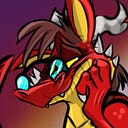Adventures in GameDev with GameDevHQ, Day 6: UNITY, how to install it, and get into game development!
Unity is currently the hottest game platform to produce indy game titles as well as more serious apps and this is the engine I will be using to learn game dev, so here’s a short guide in getting it installed on your machine!
First of all, head on down to Unity.Com and you’ll be greeted with a beautiful page inviting you to delve into the depths of indy game design, so let’s do it! Push the ‘Get Started’ button to start this adventure!
You’ll initially get a plans and pricing page with it set to teams initially, don’t panic! It’s completely free for you and me! At least until you start making 100k with your games and by then it won’t even cost an arm and a leg! Click on Personal. You can click on Student if you want though. Either one will get you going.
You’ll then see this screen for first time users or returning users. Go ahead and pick First time users if you’ve never used Unity before, otherwise, I’m going to click on returning users.
click the accept terms and download Unity hub and you’re on your way! The website will automatically detect which operating system you’re using and send you the appropriate executable.
Here’s the directory where I downloaded my UnityHub. You’ll notice the extension says ‘AppImage’. That’s a new executable standard for Linux, the current operating system I’m using. So let’s double click it!
Once loaded, the UnityHub has a projects section where it will list all of your current projects. A learn section for tutorials on learning unity, a community section to connect with other developers, and finally the installs, where you will install the latest unity version. As you can see I’ve already got a couple, but we’ll install an older version and pretend we’re installing the latest and greatest!
As you can see, installing Unity is super simple! Just select the version you want, select which components. In my case, I’m not going to be publishing to windows yet, so I removed that. When I do, I’ll send my project over to another machine that has windows on it to compile there. Anyway, click on next, agree to the user agreement and Voila! Unity is now being installed!
Next, we’ll want to actually create our project. Open Unity hub, you may need to log in to Unity and you may need to register an account. If so, go back to the Unity website and register.
When you want to create a project, go up to the upper right arrow and select which Unity version you’ll want to use. I figure I’ll use the latest and greatest. Then select which directory I want the game to go into, and finally name the game and hit create. Unity will create a directory from the name you entered and place all of its assets into it. Simple as that! Let’s take a quick overview of the editor.
In a nutshell:
Scene view: this is where you’ll be doing most of your work placing Game Objects, creating UI and generally placing sprites and models and tiles for your game.
Heiarchy view: If it’s in the scene view, it’s listed here. Also if you can select it in the scene view, you can select it in the heirarchy view as well!
Project View: This is where all of your games assets are located at. Consider this the huge box of legos you dig into when you need to find any piece!
Inspector view: When you select any game object, the inspector view will show you everything there is to know about the object. if you’re going to be doing any detailed editing of an object or its components, this is the place you’ll be looking.
NAVIGATING THE SCENE VIEW
Pressing the left mouse button will select. as stated earlier, you can select either in the main scene view or the heirarchy!
Right clicking on the mouse will let you pan the view and move around the scene.
Scrolling the mouse wheel will let you zoom in and out.
holding down the right mouse button and using WASD keys will let you navigate around more naturally like most FPS’s.
if you ever lose track of an object, just press ‘f’ to focus on it!
You can also select the hand tool if you want to pan around.
MANIPULATING OBJECTS IN UNITY
Everything inside of unity is considered a Game Object, every game object has a shared component, the transform, which contains information position, rotation, and scale of the object. So how can you affect this transform?
It’s really simple! We’ll go over the manipulation icons quickly. First is the transform, it will allow you to move any game object in space.
Next is the rotate tool, it will place 3 axis around the object you can manipulate. They’re color coded like the transform. red for x, green for y, and blue for z.
The next tool is the scale tool which allows you to stretch an object to a new size on any axis.
The next tool is rect which allows for more freeform scaling on a limited 2d axis. It’s actually better suited to 2d sprites.
Finally there’s the all in one tool. Not really recommend for beginners.
Finally on the upper right hand side of the screen is a navigation tool, you can click on each little cone to select which axis you want to see the scene at. clicking on it twice will switch from perspective to orthogonal and back again. Finally right clicking will select a predefined view like ‘left’, ‘top’, etc.
And that’s about it for now! Go forth and make the next huge RPG! Ok, maybe not yet, but tomorrow we’ll be looking at how to set up your editor to a more professional layout.
See you then!
